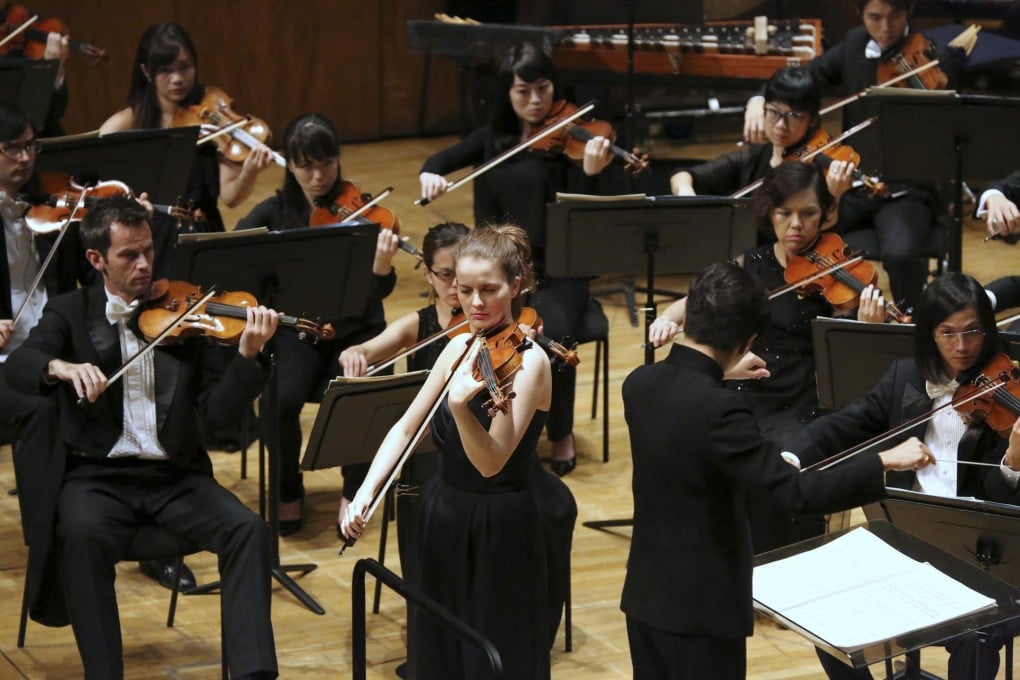Review: Veronika Eberle plays Shostakovich - flawless, glowing sound
From her first bow stroke, the violinist immersed herself in Shostakovich's Violin Concerto No 1 and played like a star, ably accompanied by the Hong Kong Sinfonietta under Yip Wing-sie

From the chocolate sound of her first bow stroke, violinist Veronika Eberle immersed herself in Shostakovich's Violin Concerto No 1 and played like a star. In the first movement, , her smoky low range melted into the bassoon and low woodwinds. Supported by the Sinfonietta with conductor Yip Wing-sie, the music rose and fell through moods from pleading to angry to the final luminous note.
Shostakovich occupies a curious niche. There is a bitter, war-weary edge to his harmony and phrasing, tempered with blunt, square rhythms and block colour orchestration. The showed the sassy side of Shostakovich and Eberle alike, led by a nimble flute and bassoon duet. The climax of the concerto was a cadenza in the movement. A see-saw murmur built relentlessly to wild cross-string bowing in a controlled rant. Eberle was flawless, with a warm, glowing sound, clean octaves and perfectly secure shifts up and down the fingerboard.
Charles Kwong, a Hong Kong composer, was commissioned to write a piece for the sinfonietta, titled This was a textural piece, focusing on colour rather than melody. Kwong created delicate, shifting impressions of a Hong Kong landscape from dusk to dark.
After an initial percussion flurry, twilight was evoked with eerie string harmonics and expressive cello glissandos. The flutes made a whispery chatter and the basses rustled with indefinite pitch tremolos, overlaid with sprinklings of harp chords, dreamy celeste runs and muted brass outbursts, evolving into more solemn string passages. The orchestra controlled the fluctuating balances and the rhythm was crisply coordinated.
The Sibelius , Op 22 was uneven. It began with an ambiguous chord for four horns. This is a signature harmony for the piece and the horns did not tune or balance it elegantly enough.
There were, however, many lovely moments such as Lim Hee-young's beautiful cello solo in the . Cor anglais soloist Mami Fukuhara played eloquently.
